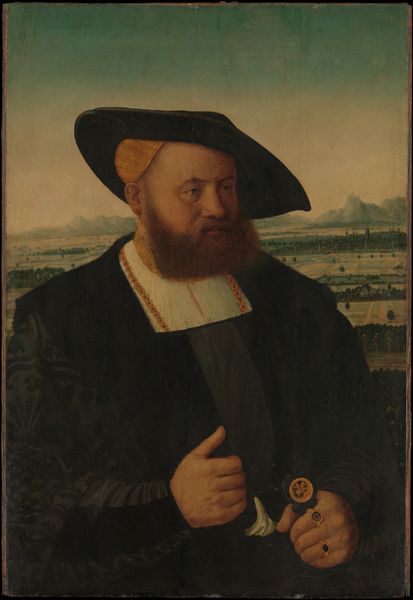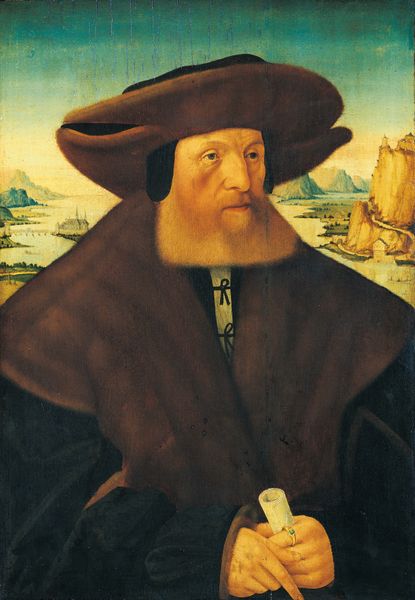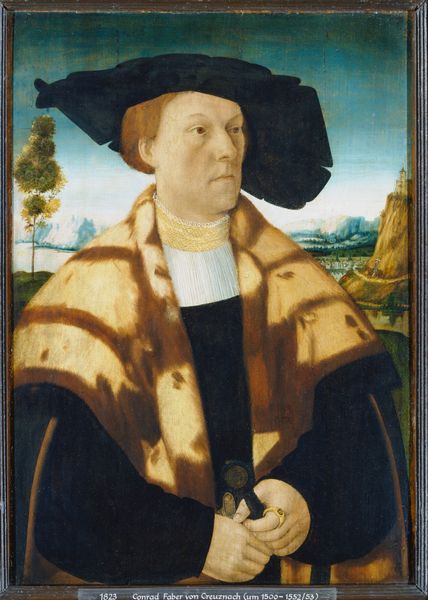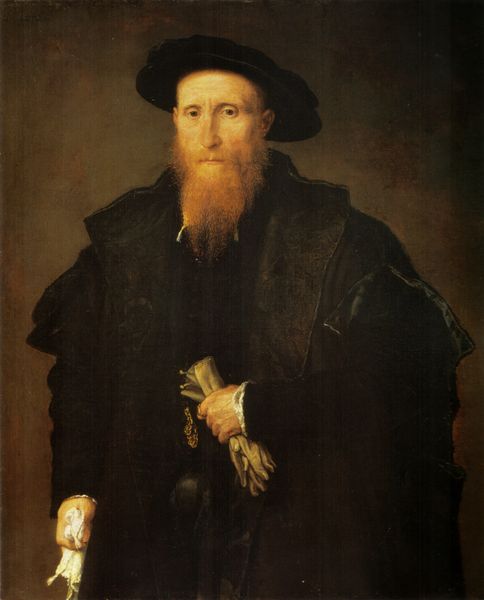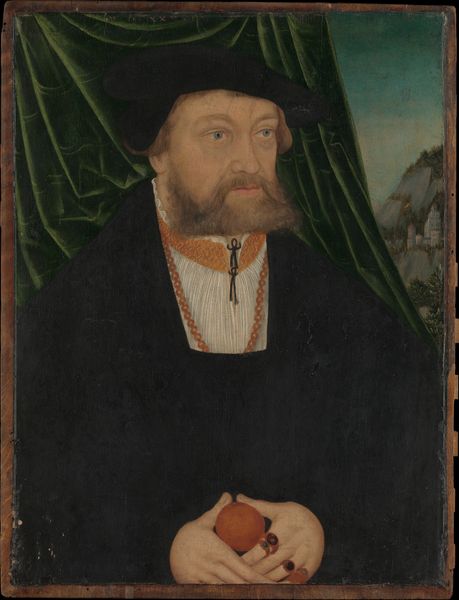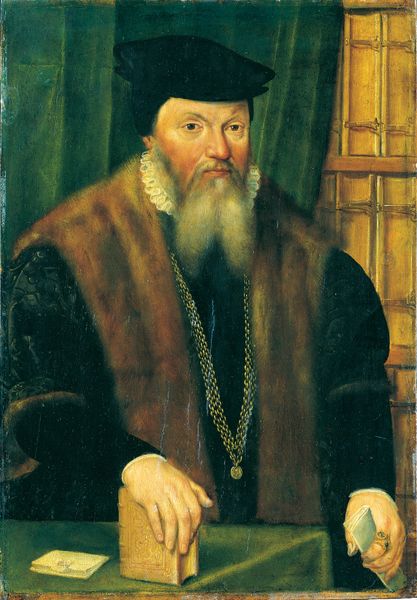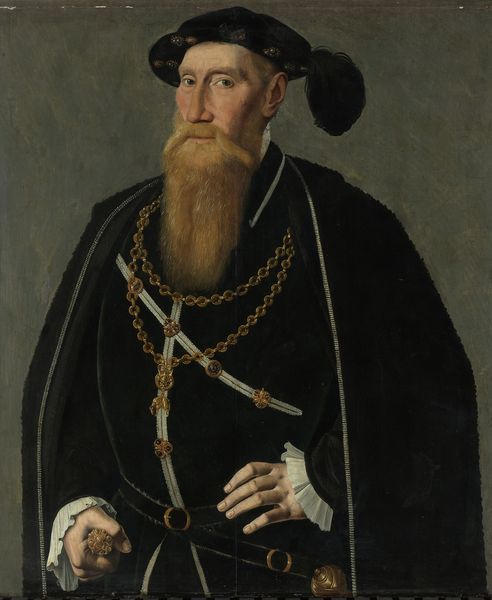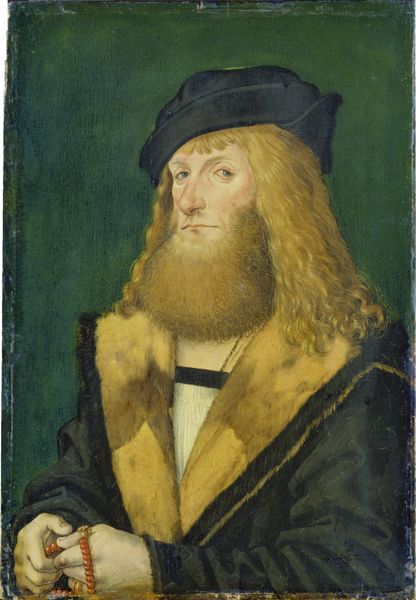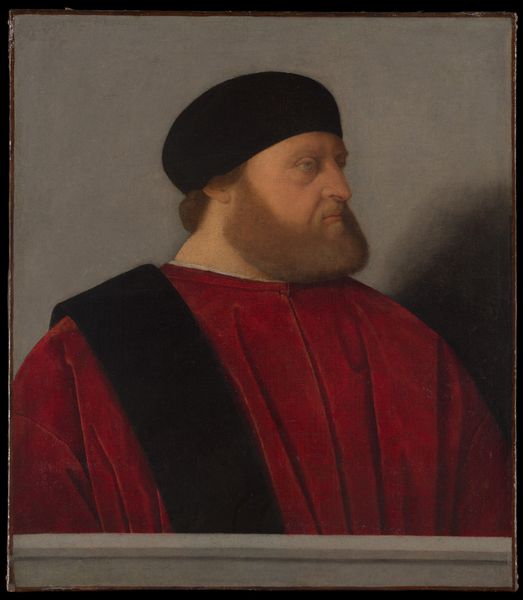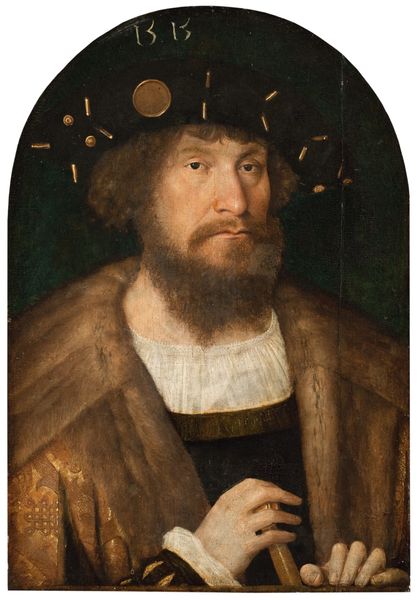
Heinrich(?) vom Rhein zum Mohren (1477–1536) 1527 - 1529
0:00
0:00
Dimensions: Overall 21 3/4 x 15 5/8 in. (55.2 x 39.7 cm); painted surface 21 1/2 x 15 in. (54.6 x 38.1 cm)
Copyright: Public Domain
Editor: So, this oil painting is "Heinrich(?) vom Rhein zum Mohren," created by Conrad Faber von Creuznach around 1527-1529. I’m immediately struck by the detail in his clothing versus the simplicity of the landscape. What are your thoughts on this contrast? Curator: Well, that's a keen observation. Consider this painting within the context of the burgeoning merchant class in the Renaissance. The subject’s rich attire—the fur, the gold rings, even the precisely rendered rosary—all signal status and wealth. It's likely this painting served a social function. Editor: How so? Was it pure display? Curator: In part, yes, certainly. But also, paintings like this solidified social identity and promoted certain civic virtues. Faber wasn't just creating an image; he was contributing to the construction of social narratives. The precise depiction of Heinrich broadcasts the city’s wealth. Have you noticed the controlled restraint in the palette? What does that say to you? Editor: I suppose the restricted range of colors reflects a specific sensibility or desired message, not drawing too much attention through gaudiness but expressing quality and self-control instead. So the art shapes society’s values, not just reflects them. Curator: Exactly! These portraits become vital records and instruments within the intricate game of class politics in 16th century German society. Faber’s contribution wasn't only artistic; it was a public and political one. Editor: This really makes me look at the piece from a totally different angle. Now the individual doesn't stand alone but connects into a historical system. Thanks for explaining. Curator: It’s all about layers, isn’t it? The individual, the society, and the ways images participate in their shaping. Thinking about how institutions reinforce these messages really opens things up.
Comments
No comments
Be the first to comment and join the conversation on the ultimate creative platform.

